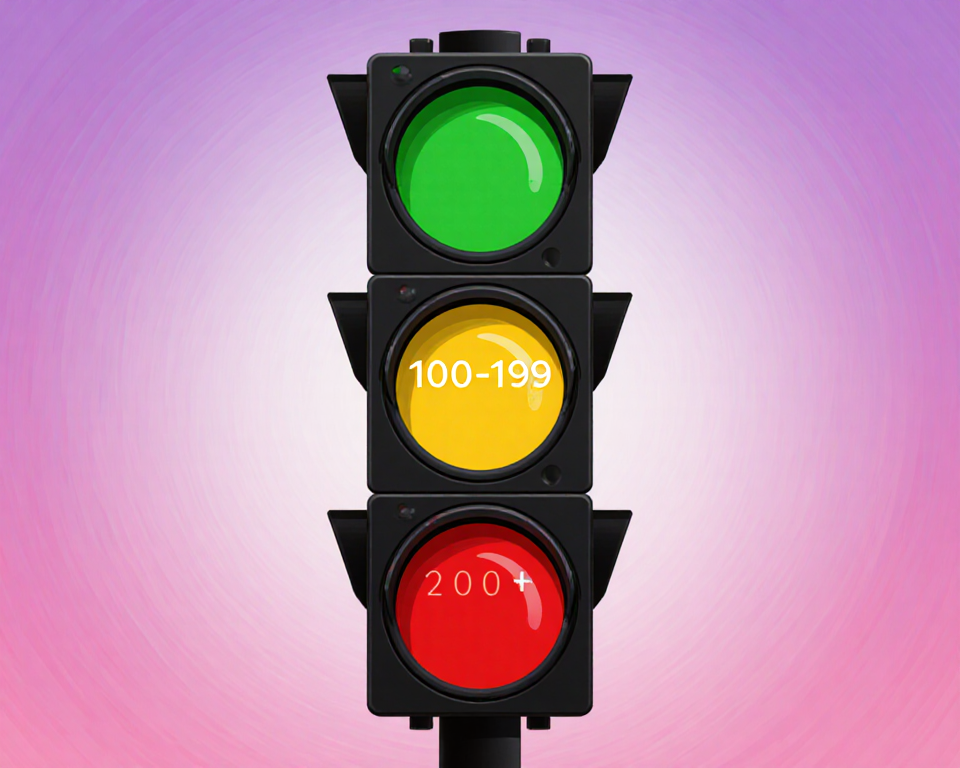Blood Test Normal Range and What It Means: Decoding the Numbers That Matter

Blood tests are the silent storytellers of our bodies, turning complex biochemistry into plain numbers. Yet, when a lab sheet arrives, the numbers can feel like a cryptic crossword. What does a “normal range” actually signify? How can you separate the ordinary from the alarming? In this guide, we’ll break down the concept of the blood test normal range, explore why it matters, and give you practical tips to interpret your results with confidence.
What Is a Blood Test Normal Range?
A normal range is a span of values that most healthy people fall within for a particular test. Think of it as a traffic light: green means “all good,” yellow warns to keep an eye, and red signals you need to see a doctor. The range is not a rigid rule but a statistical window built from large groups of people who are considered healthy.
Components of the Normal Range
- Lower limit: The lowest value typically seen in healthy individuals.
- Upper limit: The highest value typically seen in healthy individuals.
- Mean or median: The average value around which most results cluster.
How Ranges Are Determined
Laboratories collect data from thousands of volunteers, excluding those with known health issues. They then calculate the 2.5th to 97.5th percentiles, giving a 95% confidence interval. This process ensures that most healthy people will fall within the range, but a few healthy outliers may still appear outside it.
Interpreting Your Results: What the Numbers Really Say
Understanding the normal range is only half the battle. The real question is: what does your specific result tell you?
Common Tests and Their Ranges
| Test | Normal Range | What It Indicates |
|——|————–|——————-|
| Hemoglobin (Hb) | 13.5–17.5 g/dL (men) / 12.0–15.5 g/dL (women) | Oxygen transport capacity |
| White Blood Cells (WBC) | 4,500–11,000 cells/µL | Immune system activity |
| Creatinine | 0.6–1.3 mg/dL | Kidney filtration function |
| HbA1c | <5.7% | Long‑term blood sugar control |
When to Worry and When to Relax
- Outside the range but clinically insignificant: A single reading slightly above the upper limit might not signal disease. Stress, caffeine, or a recent infection can push numbers up.
- Consistently abnormal: Repeatedly high or low values usually warrant further investigation.
- Sudden changes: A dramatic shift from previous results could indicate an acute issue.
> “Health is a state of complete harmony of the body, mind, and spirit.” — B.K.S. Iyengar
Factors That Shift the Normal Range
The normal range is not a one‑size‑fits‑all number. Several variables can shift the boundaries, making it crucial to consider context.
Age, Gender, and Lifestyle
- Age: Older adults may have slightly higher creatinine due to reduced muscle mass.
- Gender: Men generally have higher hemoglobin levels.
- Lifestyle: Smoking, high altitude, and intense exercise can alter blood counts.
Lab Variations and Reference Intervals
- Different equipment: Some machines read slightly differently, leading to minor range variations.
- Population differences: Laboratories may use reference intervals based on the local demographic.
Because of these factors, it’s wise to ask your doctor if the lab’s reference range matches your profile.
A Real‑World Anecdote: My Friend’s Unexpected Result
I once met Alex, a 32‑year‑old marathon runner who thought his blood work was a routine formality. He received a result that showed his hemoglobin was 12.2 g/dL—just below the normal range for men. Alex was stunned. He had no anemia, no fatigue, and his performance was top‑notch.
When he consulted his doctor, the explanation was simple: intense endurance training can cause “sports anemia,” a harmless drop in hemoglobin due to plasma volume expansion. Alex’s case taught me that a single number can be misleading without context.
The Lesson Learned

- Numbers need narrative: A value out of range is a clue, not a verdict.
- Ask questions: Why did this happen? What does it mean for your health?
“Keep Calm and Carry On”: Managing Anxiety Around Blood Tests
It’s easy to feel like a detective when you’re staring at a lab sheet. Here are some tips to keep your nerves in check.
Practical Tips for Accurate Results
- Fast appropriately: Most panels require fasting for 8–12 hours; follow the instructions.
- Stay hydrated: Dehydration can concentrate blood components, skewing results.
- Avoid strenuous exercise 24 hours before: Exercise can temporarily alter certain markers.
- Communicate: Tell your healthcare provider about supplements, medications, or recent illnesses.
Remember, a calm mind leads to a calmer body—and clearer numbers.
Turning Numbers Into Health Insights
Now that you understand what a normal range is and how to interpret your results, you can transform data into action.
When to Call Your Doctor
- Consistent abnormalities: Repeated high or low values.
- Symptom correlation: If a number doesn’t match how you feel.
- Sudden shifts: A drastic change from previous results.
Empowering Your Health Journey
- Track trends: Keep a log of your results over time.
- Set goals: Use numbers to guide lifestyle changes—diet, exercise, sleep.
- Collaborate: Work with your healthcare team to adjust targets as you age or change activity levels.
Blood test normal range and what it means is more than a clinical phrase—it’s a roadmap. By decoding the numbers, acknowledging the variables that shift them, and pairing data with personal context, you can navigate your health with clarity and confidence. The next time you receive a lab sheet, you’ll know exactly how to read it and, more importantly, what to do next.